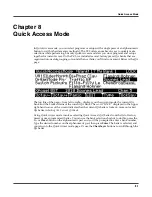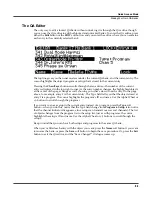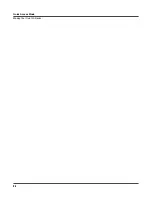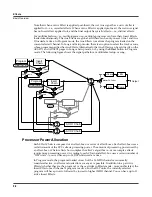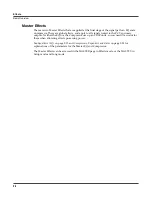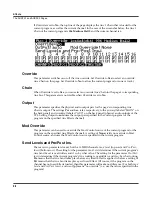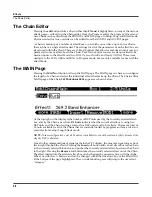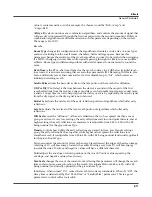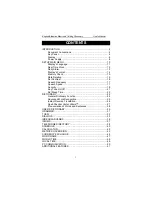
9-10
Effects
FXLFO, FXASR, and FXFUN pages
FXLFO, FXASR, and FXFUN pages
The FXLFO, FXASR, and FXFUN pages are the pages from which you edit the Effects-only
Control sources. These are Control sources that can be used by the effects Mods in the current
Chain. The parameters on these pages work exactly like those of the corresponding Control
sources in program mode (see
The LFO Page
,
The ASR Page
, and
The Function (FUN) Page
in
Program Mode
).
Effects Parameters
This section contains descriptions of the PC3’s many effects parameters, and instructions on
how to use them. Read through this chapter to get a good general understanding of the
parameters.
The descriptions here do not include all of the parameters associated with every effect, and
some effects may not have some of the parameters described here for their category. A more
complete reference, with every effect and the meaning and range of every parameter, arranged
in the order they appear on the screen, can be found in the
KSP8 Algorithm Reference Guide
on the
Kurzweil website, www.kurzweilmusicsystems.com.
General Parameters
There are a number of parameters that are common to all or almost all algorithms, and we’ll deal
with those first.
Wet/Dry
balances the levels of the processed and unprocessed signals passing through the
preset. The range is 0% wet (the signal is unprocessed) through 100% wet (no dry signal is
present). A setting of 50% wet means the dry and processed signals are roughly equal in level. In
some algorithms, separate Wet/Dry parameters are provided for the Left and Right input
channels. In some cases, this parameters can have negative values, which indicate that the Wet
signal is polarity-inverted.
Out Gain
sets the gain at the output of a preset.
In/Out
enables or disables the effect. You can think of it as a Wet/Dry parameter with only two
positions: 100% (In) and 0% (Out).
HF Damping
is the cutoff (-3 dB) frequency of a 6dB/octave lowpass filter that’s inserted before
the processor. In the case of processors where multiple iterations of the signal are heard, such as
in a delay, each iteration of the signal will pass through the filter, and will therefore be duller.
XCouple
(Cross Couple). In stereo effects, this controls how much of any signal being fed back is
going to the channel
opposite
to the one where it first appeared. At 100%, all feedback from
signals at the left input goes to the right channel and vice versa, causing a “spreading” or in the
case of delay lines, a “ping-pong” effect. At 0%, fed-back signals stay with the channel they
came in on.
A->B cfg
(configuration). In combination algorithms that contain two (or more) components,
and whose name uses “<>”, as in 719 “Reverb<>Compress”, the order in which the signal
passes through the two components can be changed. For example, this algorithm can be
configured so the signal passes through the reverb first and then the compressor, or through the
compressor first and then the reverb. The
cfg
parameter determines the configuration, and its
Содержание PC3
Страница 24: ...1 6 Introduction Options ...
Страница 50: ...4 4 The Operating Modes Using the Modes ...
Страница 174: ...7 54 Setup Mode The Utility Soft Buttons ...
Страница 178: ...8 4 Quick Access Mode Making Your Own QA Banks ...
Страница 204: ...9 26 Effects Mono Algorithms ...
Страница 266: ...A 2 MIDI Implementation Chart ...
Страница 308: ...Index x ...


